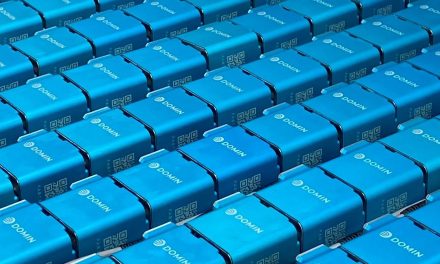 Designers specifying pneumatic components for production equipment used within the food and beverage industry need to take into account very strict hygiene standards. Frank Schnur, technical director, food and beverage, Norgen, looks into the challenges faced
Designers specifying pneumatic components for production equipment used within the food and beverage industry need to take into account very strict hygiene standards. Frank Schnur, technical director, food and beverage, Norgen, looks into the challenges faced
The need to reduce costs while remaining competitive means manufacturers in the food and beverage production sector are under pressure to optimise equipment reliability and productivity. Alongside this, however, local and international standards of hygiene need to be considered. If companies fail to meet these, not only could they be heavily penalised, but their brand could be damaged by a product recall or, worse, a market-wide consumer claim due to contamination caused by substandard machinery designs.
There are two key standards which designers of food production equipment must consider – the EU Directive for Food Hygiene (93/43/EEC) and the European Hygienic Equipment Design Group (EHEDG) Regulation on the Design of Machinery for Food Processing Purposes (89/392/EEC). In addition to these, however, there are many other global, EU and UK-specific standards which cannot be ignored.
The standards create new challenges in process control, materials, surfaces and required corrosion resistance, and place ever more stringent demands on the physical design of equipment, the choice and positioning of individual components, and the specification and use of consumable products such as lubricants and cleaning agents.
Requirements
Pneumatic equipment is integral to so many aspects of food processing and packaging, not least in automation and robotics, where the latest innovations play a key role in minimising the need for human work and so reducing processing time.
As with other process equipment and components, compressed air and pneumatic products are governed by very strict rules to minimise the risk of contamination. The most important of these is EN1672: Food Processing Machinery – General Design Guidelines, which stipulates clear requirements for food areas (where the surface is in contact with the main product flow), splash areas (where food may splash but will not be reincorporated into the product), and non-food or ‘product-free’ areas.
In food areas, pneumatic components should be engineered from corrosion-resistant, non-toxic and non-absorbent materials and should be suitable for washdown processes – stainless steel cylinders, valves and fittings are generally ideal, along with food grade tubing – to minimise contamination risks. Furthermore, the design and construction of the shape and surface finish should prevent liquid from being retained, while all systems and components should either be open for easy cleaning, or completely closed and sealed to eliminate the risk of contamination.
In areas where system components may be liable to splash contact from foodstuffs which are not reintroduced into the main product flow, the design should be similar to that in the food area. Requirements on materials are less stringent but only as long as there is no risk to, or adverse effects on, the food product being handled, although materials must still be easy to clean and capable of being disinfected where required. Here, anodised or coated aluminium cylinders, plastic valves, plastic and PA tubing can all feature in the component design, as long as the requirements are clear and materials are acceptable in the application.
Even in non-food areas, the quality of design cannot be compromised, with materials which are both easy to clean and resistant to corrosion needing to be specified. Pneumatic cylinders can typically be either anodised or coated aluminium, while ISO valves, plastic fittings, control cabinets, FRL units and PA tubing can also be used.

Selecting components
There are a wide range of options available from pneumatic component manufacturers in both cylinders and valves. But, continued investment in research and development has resulted in the availability of the first integrated valve and actuator control units which combine the valve, flow controls, cushioning and sensors in a single actuator package, with cleanline versions available specifically for the food and beverage sector. Additional benefits include significantly lower energy consumption.
The result is that designers can optimise the selection of pneumatic components to ensure compliance with key hygiene standards without compromising on productivity and performance.
Norgren

